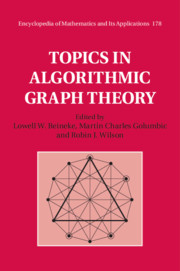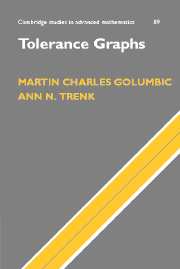In this chapter we discuss the definitions, results and open questions that appear in Golumbic and Monma (1982) and Golumbic, Monma, and Trotter (1984), the papers which introduced the topic of tolerance graphs. We also present consequences of these results and related topics from more recent literature.
Notation and observations
Recall from Section 1.3 that a graph G is a tolerance graph if each vertex ν ∈ V(G) can be assigned a closed interval Iν and a tolerance tν ∈ R+ so that xy ∈ E(G) if and only if |Ix ∩ Iy| ≥ min{tx, ty}. If graph G has a tolerance representation with tν ≤ |Iν| for all ν ∈ V(G), then G is called a bounded tolerance graph.
Many important graph properties are inherited by all induced subgraphs and thus called hereditary properties. Given a (bounded) tolerance representation 〈I, t〉 of a graph G, for any subset of vertices W ⊆ V(G) the intervals {Iw | w ∈ W} and tolerances {tw | w ∈ W} give a representation of GW. Thus, induced subgraphs of tolerance graphs are also tolerance graphs and induced subgraphs of bounded tolerance graphs are also bounded tolerance graphs. We record this as a remark.
Remark 2.1. The property of being a tolerance graph (resp. bounded tolerance graph) is hereditary.
In a tolerance representation of a graph G, we may have intervals of the form Ix = [ax, ax].

